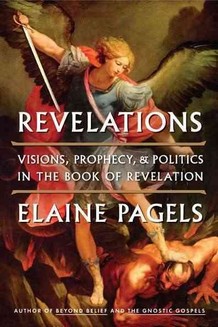- HOME
- INTRO TO THE FORUM
- USE AND MISUSE
- BADLY WRITTEN, BADLY SPOKEN
- GETTING
TO KNOW ENGLISH - PREPARING FOR ENGLISH PROFICIENCY TESTS
- GOING DEEPER INTO ENGLISH
- YOU ASKED ME THIS QUESTION
- ADVOCACIES
- EDUCATION AND TEACHING FORUM
- ADVICE AND DISSENT
- MY MEDIA ENGLISH WATCH
- STUDENTS' SOUNDING BOARD
- LANGUAGE HUMOR AT ITS FINEST
- THE LOUNGE
- NOTABLE WORKS BY OUR VERY OWN
- ESSAYS BY JOSE CARILLO
- A Unified Approach To The Proper Use Of Punctuation In English - II
- A Unified Approach To The Proper Use Of Punctuation In English - III
- Steeling Ourselves Against Common Subject-Verb Disagreement Pitfalls
- The Appropriate Way To Position Subordinate Clauses And Phrases
- Please Don’t Wish Me ‘More Power!’
- Let’s Say Goodbye To Those Irritating English Clichés
- ABOUT JOSE CARILLO
- READINGS ABOUT LANGUAGE
- TIME OUT FROM ENGLISH GRAMMAR
- NEWS AND COMMENTARY
- BOOKSHOP
- ARCHIVES
Click here to recommend us!
ADVICE AND DISSENT
This section features discussions on education, learning and teaching, and language with particular focus on English. The primary subjects to be taken up here are notable advocacies and contrary viewpoints in these disciplines and their allied fields. Our primary aim is to clarify matters and issues of importance to language and learning, provide intelligent and useful instruction, promote rational and critical thinking, and enhance the individual’s overall capacity for discernment.
“Book of Revelation’s fantastic imagery are true events in code”
The ending of the Bible—the Book of Revelation—has always been a pop hit, says Adam Gopnik in a review of Elean Pagels’ Revelations: Visions, Prophecy, and Politics in the Book of Revelation (Viking, 246 pages) in the March 5, 2012 issue of The New Yorker. He observes that it’s an ending that has every element that a Hollywood mega producer could want: dragons, seven-headed sea beasts, double-horned land beasts, huge stylized battles involving hundreds of thousands of angels and demons, and even a temptress. “Everybody reads Revelation; everybody gets excited about it; and generations of readers have insisted that it might even be telling the truth about what’s coming for Christmas,” he says.

But as Gopnik points out in his review of Pagels’ book, Pagels has sought to establish that the Revelation is far from being meant as a hallucinatory prophecy. “It is actually a coded account of events that were happening at the time [of its] writing,” he says. “It’s essentially a political cartoon about the crisis in the Jesus movement in the late first century, with Jerusalem fallen and the Temple destroyed and the Saviour, despite his promises, still not back.”
Indeed, as Pagels herself says in an interview about her book, “Much of what we find in the Book of Revelation couched in the fantastic imagery are descriptions of events that for [John of Patmos, the author] were very close — the war in Jerusalem, the eruption of Mount Vesuvius, the Roman Emperors who were ruling at the time. ... It seems as though [John] reacted to that, saying, ‘Jesus is coming and he is going to destroy all of this.’ It was John’s conviction that the destruction of Jerusalem was the beginning of the end of time that Jesus had predicted.”
Read Adam Gopnik’s “The Big Reveal: Why does the Bible end that way?” in The New Yorker now!
Read an interview with Elean Pagels on her book Revelations in NPR.com now!
RELATED READING:
In “The God wars,” an article in the February 28, 2012 issue of the New Statesman, Bryan Appleyard reviews Alain de Botton’s new book, Religion for Atheists: a Non-Believer's Guide to the Uses of Religion (Penguin UK, 320 pages), which boldly argues that the supernatural claims of religion are of course entirely false, but that religions still have some very important things to teach the secular world. Appleyard’s conclusion: “The history of attempts to destroy religion is littered with the corpses of believers and unbelievers alike. There are many roads to truth, but cultish intolerance is not one of them.”

Read Byran Appleyard’s “The God wars” in the New Statesman now!
Click to read responses or post a response
View the complete list of postings in this section
(requires registration to view & post)





